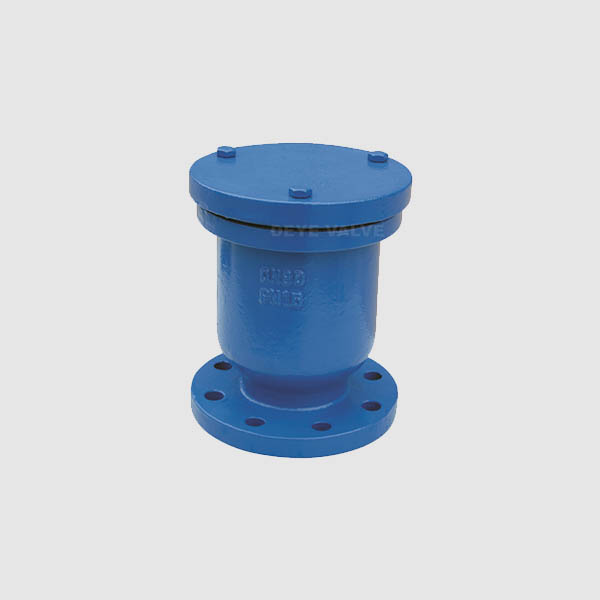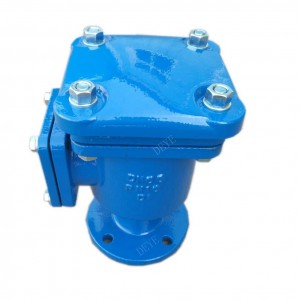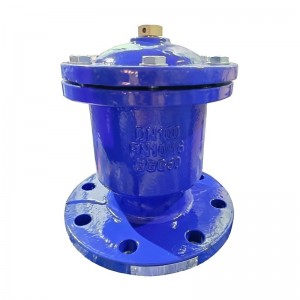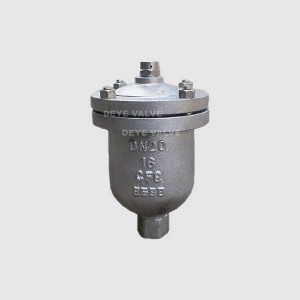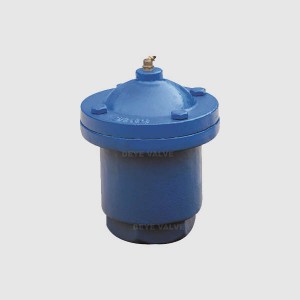flanged cast iron single sphere air release A-H-03
Quick Detail
Design standard: DIN
Body material: Cast Iron GG25
Float Ball: ABS
Nominal diameter: 3″
Pressure: PN16
End connection: RF. Flange EN1092-1
Working temperature: -30℃~+120℃.
Test and inspection: API 598.
Air valve with Stainless steel mesh
Epoxy Powder Coated Inside and outside.
Peformance:
●The Air Release Valve is automatic in operation. They have much smaller orifices than Vacuum Valves. They release small pockets of air that gather at the high points of a system after it is filled and under pressure.
● The Air Release Valve has the ability to open against internal pressure because it has a small orifice and a leverage mechanism that multiplies the force of the float.
This force must be greater than the internal pressure across the orifice in order to open the orifice when a pocket of air needs to be vented
| Body material | GG25/GGG40/cast/ductile iron/Stainless steel |
| Ball | ABS or Rubber/Stainless steel |
| Surface | epoxy powder-coated Min.250 microns |
| Pressure Range | PN6 PN10 PN16 PN25 |
| Size Range | 2”-4” |
| Optional Ends | NPT BSPT male/Female |
| Optional Design | Double sphere type |
● The Air Release Valve is automatic in operation. They have much smaller orifices than Vacuum Valves. They release small pockets of air that gather at the high points of a system after it is filled and under pressure.
● The Air Release Valve has the ability to open against internal pressure because it has a small orifice and a leverage mechanism that multiplies the force of the float.
This force must be greater than the internal pressure across the orifice in order to open the orifice when a pocket of air needs to be vented
Heating, boilers, solar water heaters, water supply systems, equipment support, etc.

